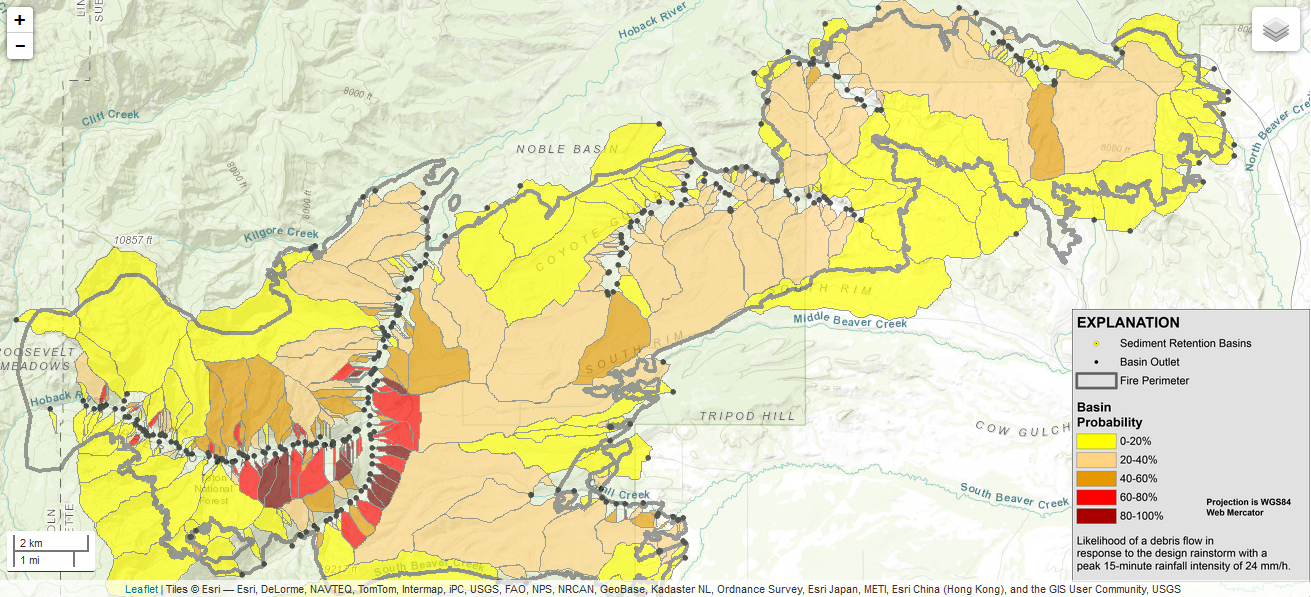***While this page highlights the burn scar associated with the Roosevelt Fire, these impacts can occur down slope and/or downstream of any burn area, big or small. Please contact local officials if you are unsure of your risk.***
|
Greatest Risk Area
Creeks / Streams Impacted
Other Impacted Areas
|

Click map above for close-up picture. Visit this link for a complete What should people who live near burn areas do to protect themselves from potential Flash Flooding and Debris Flows?
|